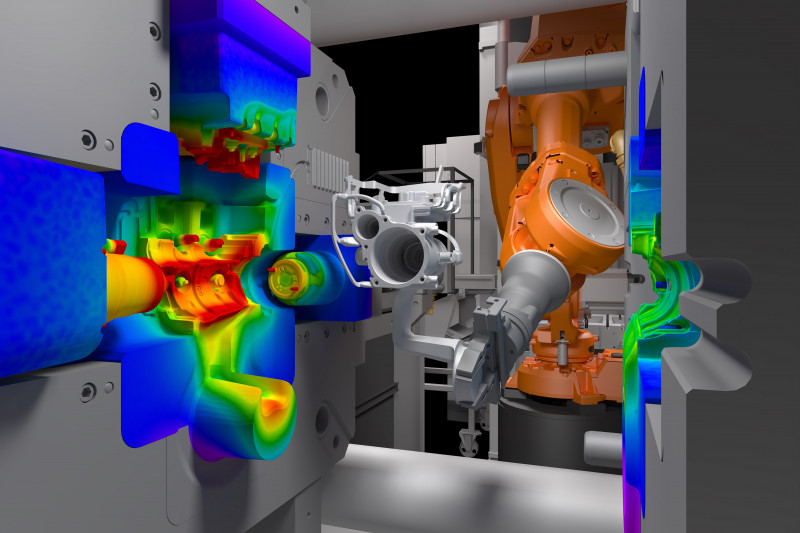Introduction
Aluminum die casting is a widely used manufacturing process that involves injecting molten aluminum into a mold cavity to produce complex and intricate parts. The quality of the mold used in this process plays a crucial role in determining the overall manufacturing efficiency and product quality. Therefore, it is essential to focus on creating high-quality aluminum die casting molds to achieve optimum results.
Importance of High-Quality Molds
High-quality molds are essential for several reasons. Firstly, they ensure consistent and accurate reproduction of the desired shape and dimensions of the final product. This is crucial for maintaining product quality and meeting customer specifications. Secondly, high-quality molds result in reduced cycle time, as they allow for faster cooling and solidification of the molten aluminum. This ultimately leads to increased overall productivity and efficiency. Lastly, high-quality molds minimize defects and rejections, thereby reducing waste and improving cost-effectiveness.
Factors Affecting Mold Quality
Several factors can influence the quality of aluminum die casting molds. These include:
1. Design: The mold design should be optimized for efficient filling and solidification of the molten aluminum. Proper consideration should be given to gate and runner design, cooling channels, and venting to ensure uniform filling, minimal shrinkage, and reduced porosity.
2. Material Selection: The choice of mold material is crucial for achieving high-quality molds. Aluminum alloys such as H13 and P20 are commonly used due to their excellent thermal conductivity, toughness, and resistance to thermal fatigue.
3. Surface Finish: The surface finish of the mold cavity should be smooth and free from defects to ensure accurate reproduction of the final product. Proper polishing and surface treatment techniques should be employed to achieve the desired surface finish.
4. Heat Treatment: Proper heat treatment of the mold is essential to ensure its durability and resistance to wear and deformation. This includes processes such as stress relieving, tempering, and nitriding, which enhance the mechanical properties of the mold material.
5. Precision Machining: Precise machining of the mold cavity is critical for achieving the desired part accuracy and minimizing dimensional variations. Advanced CNC machining techniques should be employed to ensure tight tolerances and high repeatability.
6. Mold Maintenance: Regular maintenance and cleaning of the mold are necessary to prevent the accumulation of dirt, debris, and residue that can affect mold quality and performance. Proper mold storage and handling should also be ensured to avoid any damage or contamination.
Techniques for Creating High-Quality Molds
To create high-quality aluminum die casting molds, the following techniques can be employed:
1. Computer-Aided Design (CAD): Utilizing CAD software allows for the efficient design and optimization of the mold geometry. This helps in identifying and rectifying any potential design flaws or issues before the mold is manufactured.
2. Simulation Software: Advanced simulation software can be used to simulate the filling and solidification process of the molten aluminum within the mold cavity. This enables the identification of potential defects such as air entrapment, porosity, and shrinkage, allowing for necessary design modifications.
3. Advanced Manufacturing Technologies: Employing advanced manufacturing technologies such as high-speed machining, electrical discharge machining (EDM), and additive manufacturing (3D printing) can enhance the precision and efficiency of mold production.
4. Quality Control: Implementing rigorous quality control measures throughout the mold manufacturing process is crucial. This includes dimensional inspections, material testing, and surface finish evaluations to ensure compliance with specified requirements.

Conclusion
Creating high-quality aluminum die casting molds is essential for improving manufacturing efficiency and product quality. By focusing on factors such as design optimization, material selection, surface finish, heat treatment, precision machining, mold maintenance, and utilizing advanced techniques, manufacturers can achieve molds that yield consistent and accurate parts. Investing in high-quality molds not only enhances productivity and cost-effectiveness but also strengthens the overall competitiveness of the manufacturing process.
-

- Mangensium alloy die-casting Thixomolding helmet
-

- Dječji bicikl od legure magnezija od 3-8 godina Jeftini vruća prodaja 14 inča dječji bicikl ZAUVIJEK na veliko 2022.
-

- OEM Die casting manufacturer produce magnesium alloy wheel for kids push bike
-

- Dijelovi za tiksom kalup od magnezija Kućište UAV-a
-

- Magnesium alloy thixomolding die-casting UAV parts C
-

- CNC obrađeni dijelovi Nosač upravljača

 0086-750-5616188
0086-750-5616188 +86 13392089688
+86 13392089688 sales@zhongmei-tech.com
sales@zhongmei-tech.com







